-
Hiscock Parker magazine
They say things come in three's .....
Been after one for some time but to me the price they demand is too much, didn't have much of the collecting funds left after a few recent purchases but couldn't let this one go, considering it come with the rifle (Which I didn't want) it was a excellent deal, the rifle itself is nice example but not a Military trainer (a commercial SMLE converted to .22. so its back for sale minus the mag)
The main reason is I wanted to reproduce one, certainly got the machines etc to do it, plan on a precise copy and then to try and simplify it and produce a modern version, not trying to re invent the wheel but a few comers could be cut, and lighter materials used.
Not a priority at present but hope to make a start sooner than later.
It is a heavy bit of kit but well designed (definitely designed thinking outside the box), I just think the forces used to load a round are a bit overpowering, you are in fact fighting against 3 spring forces. Being an Engineer and probably like most others when we produce something for ourselves we tend to go a bit OTT regarding strength, quality and durability, same happened here I think, with a few lighter springs it it may have had a longer service life......
A few pics below, may help to understand the process, the spring in the mag itself is purely for the loading ram, the heavy spring is concealed but operates the the two forks which are basically the .22 follower spring, the last is shortened spring I guess from a .303 mag ?
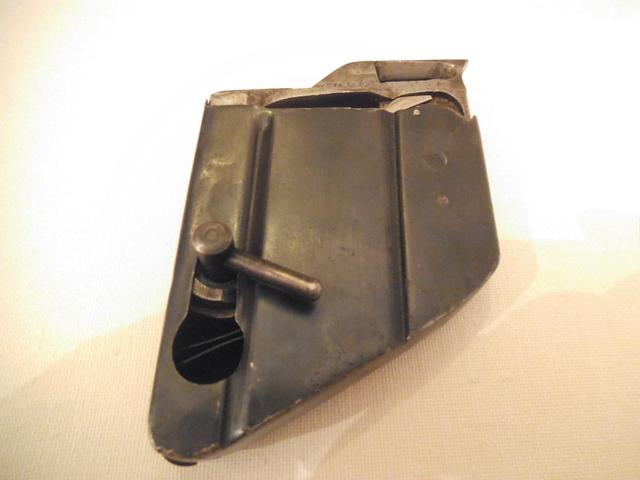
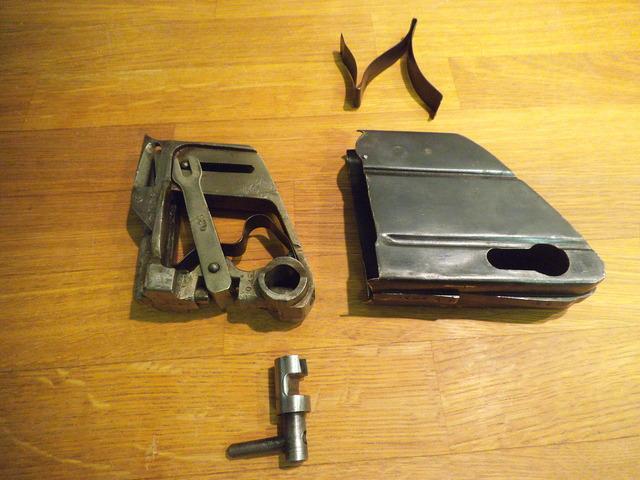
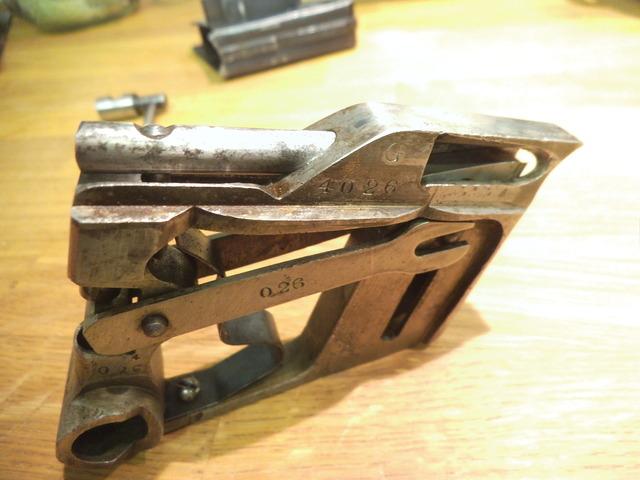
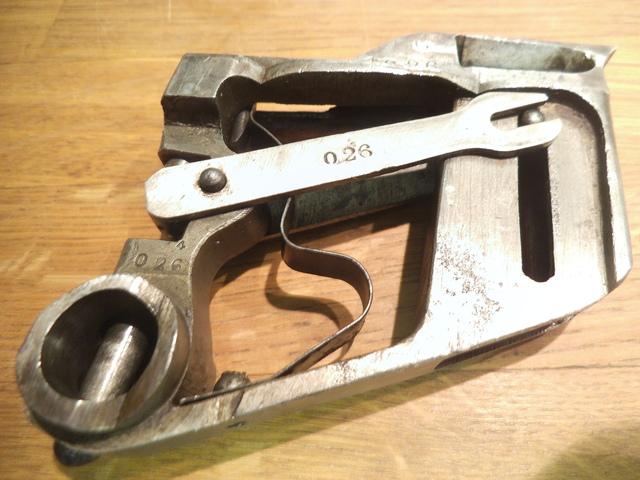
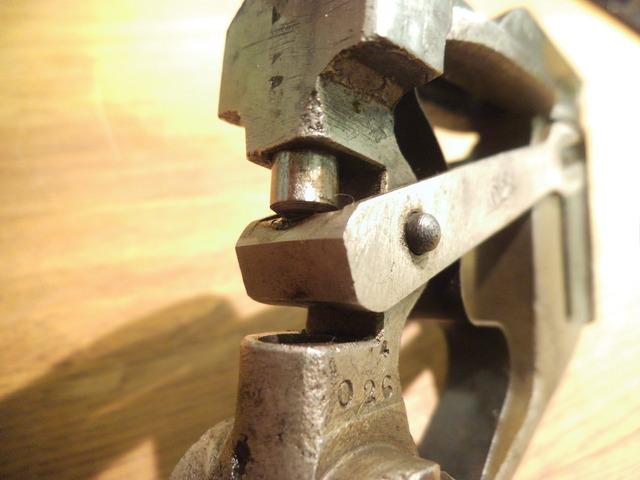
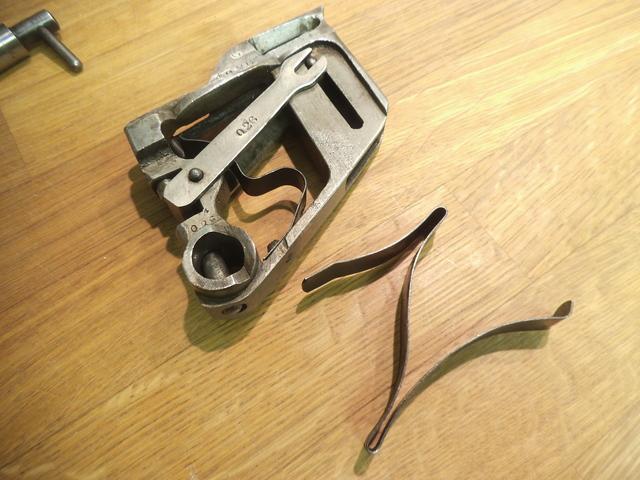
Information
 |
Warning: This is a relatively older thread
This discussion is older than 360 days. Some information contained in it may no longer be current. |
|
-
The Following 18 Members Say Thank You to bigduke6 For This Useful Post:
ArtioZen,
Beerhunter,
Brian Dick,
Buccaneer,
Colonel Enfield,
Eaglelord17,
Gil Boyd,
gsimmons,
HarryB,
henry r,
NORTHOF60,
Peter Laidler,
Res,
S-A-M3,
Son,
Steve H. in N.Y.,
Terrylee,
waco16
-
11-11-2015 07:00 PM
# ADS
Friends and Sponsors

-
Legacy Member

You lucky man! I have the correct rifle, but no magazine. When you do produce replicas, please let me know.
-
-
-
Legacy Member

Here's one for sale at a mere £800 !
SMLE Spares
-
-
Legacy Member

Its no longer for sale.....its sold now sold and now lives in Enfield not to far from the old RSAF
There are several others for sale, not by me, but be prepared to dig deep they are £950 plus
Last edited by Simon P; 11-12-2015 at 01:55 PM.
Reason: typo
Regards Simon
-
-
Advisory Panel


I have used mine quite a few times. It is an absolute pig to operate.
Starting with loading, it takes a lot of concentration to get the rounds into the magazine without them dropping end on in or going over the back of the rim below. You have to use the lever to lower the inner (.22) follower and then place the rounds in through the side, letting them roll down to the follower. Holding the box almost on it's side with the front a little higher than the back seems to work best.... thinking about it, I wonder if the rounds will go in better fed back from the exit hole at the front? Might be something to try.
Once you release the lever allowing the inner follower to return under spring pressure, fit the magazine back into the rifle. Point to make here, the rifle will not work unless you complete the mod to the bolt head. Luckily it is described in detail in the LoC complete with a diagram. (Can get the page number if anyone needs it)
When the mag is in the rifle, the main part inside the mag (outer follower) is held down against the spring by the bolt body. As Big Duke said, it is quite a heavy spring. Drawing the bolt rearward allows the outer follower to come up to feeding height. The bolt picks up the pusher rod which pushes a round out of the .22 mag until the lead angle on the bottom of the bolt face contacts the ramp at the back of the .22 mag, then forcing the outer follower down with the bolt passing over until it picks up the .22 round and completes the act of chambering it.
After firing, the extractor draws the case out and it is flicked away by the outer follower returning up to the feed position.
I see the biggest issue with the set up being the spring tension on the bottom of the bolt during it's cycle. My rifle, which, by some tell tale marks on the foreend, seems to have had a lot of use with the Parker Hiscock magazine. The bolt way is so badly worn that it causes malfunctions with firing.
Time for me to go to work, unfortunately.... I will expand on all this further this evening while watching the cricket (ahhh... sweet revenge for the Rugby World Cup)
Last edited by Son; 11-12-2015 at 03:04 PM.
-
The Following 4 Members Say Thank You to Son For This Useful Post:
-
Thanks Son, I used it tonight main issue as you say was the loading, to be honest apart from a few mishaps it went well.......
Understand regarding the bolt body, Cant say I,ll be using it often, more for display and the collection etc, may try a lighter spring, although the spring is not much when you have it apart maybe more to do with friction as its a heavy lump for the bolt to push down, think my modern version will have it on rollers bit like the sterling mag follower.
Looking at the patent drawing the first one shows a conventional .22 mag with an internal mag spring, am sure this would of been easier regarding loading combine that with lighter materials and a few tweaks I,m sure it would of been a winner.
Thinking about the bolt body also, I wonder if the wear was more to do with when it was .303 ? does anyone know the criteria or selection process of the rifles to be converted to .22 ??
Single shot .22 I,m guessing the wear would be acceptable, but with the HP mag fitted the wear was more noticeable and a hinderance.
Still have to take the hat off to the inventor, it works and I suppose after a few hundred rounds the loading and operation the operator would of got a certain knack........
-
Thank You to bigduke6 For This Useful Post:
-
Advisory Panel


I found that being very positive/ deliberate with the bolt, made it work fine, but it is quite a violent action. I agree, the closing of the bolt is probably more about the friction of both the bolt head on the loading ramp incline on the large follower as well as the sliding friction of the top front of the internals running heavily down the inside of the case. Perhaps a roller there would make all the difference. If the casting could be made out of alloy giving a reduction in it's weight, a lighter spring underneath would also ease the action... maybe even look at a longer ramp angle on the large follower as well.
To coin a phrase from my old dad, "the bloke that made that had more than $hit in his head"... I would be very interested to see what a hundred years of engineering advancements could do with the design.
Thanks for starting a topic I have been considering for a while, Bigduke 
-
-
My sentiments entirely Big Duke and Son, regarding the design of the mag. I wonder how George Patchett of Sterling magazine fame would have designed it. He knew a bit about putting a bit of genius into magazine design
-
-
FREE MEMBER
NO Posting or PM's Allowed

I am lucky enough to own a rifle and a mag.. Yes its a bothersome thing to load and you certainly have to be very positive with the bolt to chamber a round..
But I'm very happy to own it :-0
-

Originally Posted by
Scrivo18

I am lucky enough to own a rifle and a mag.. Yes its a bothersome thing to load and you certainly have to be very positive with the bolt to chamber a round..
But I'm very happy to own it :-0
Am sure any owner is happy to have one ,
,
Son and I are just looking at what could be done to improve it with modern materials and some design improvements etc, the biggest factor is the second stage of operation were the bolt head is engaging with the the top of the follower, its such a small contact area (hence the required force) but once its moving and the rest of the bolt is on top then this can't be any more than what the bolt does on top of a standard 10 round loaded magazine.
Looking at the angle I,m guessing they tried a few times, but were limited to go any further as the push rod/ram is in direct line with the chamber so anything on top is limited, this is evident when loading as the round is in contact with the top of the follower, if a conventional mag was used, the push rod/ ram could be lowered or reduced in size this would allow the top of the follower to be lower and possible increase of the angle, doing this would also need a small section of the front of the follow to be removed to allow the round to feed in to the chamber correctly once it is clear of the mag.......
-
 Information
Information





















 PM
PM










 ,
, 
